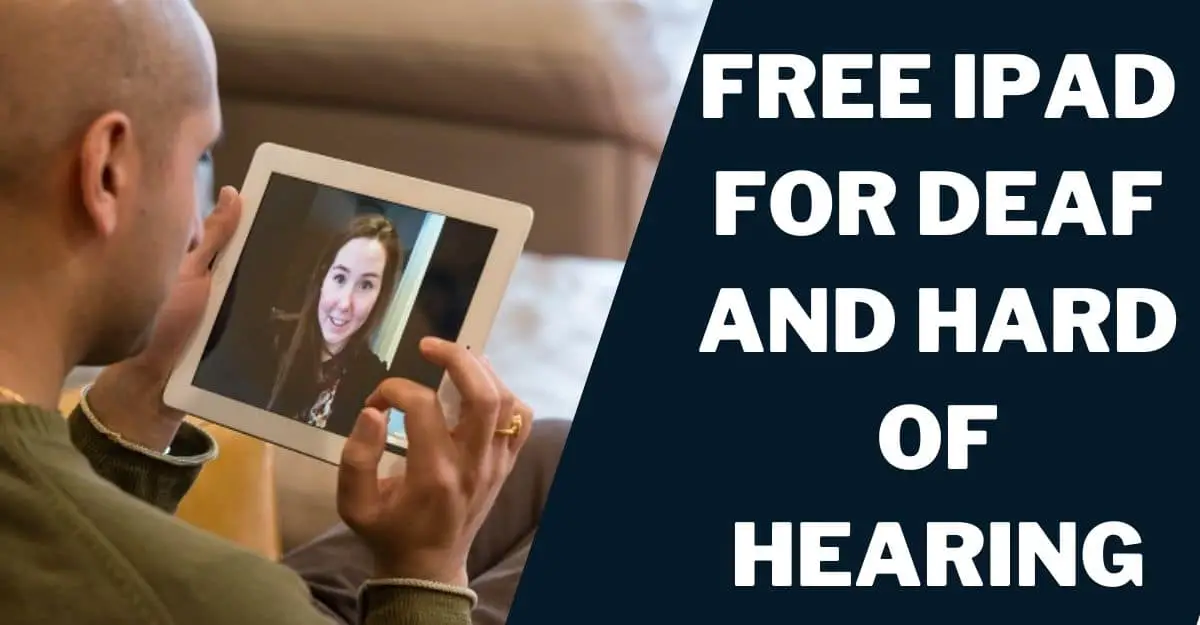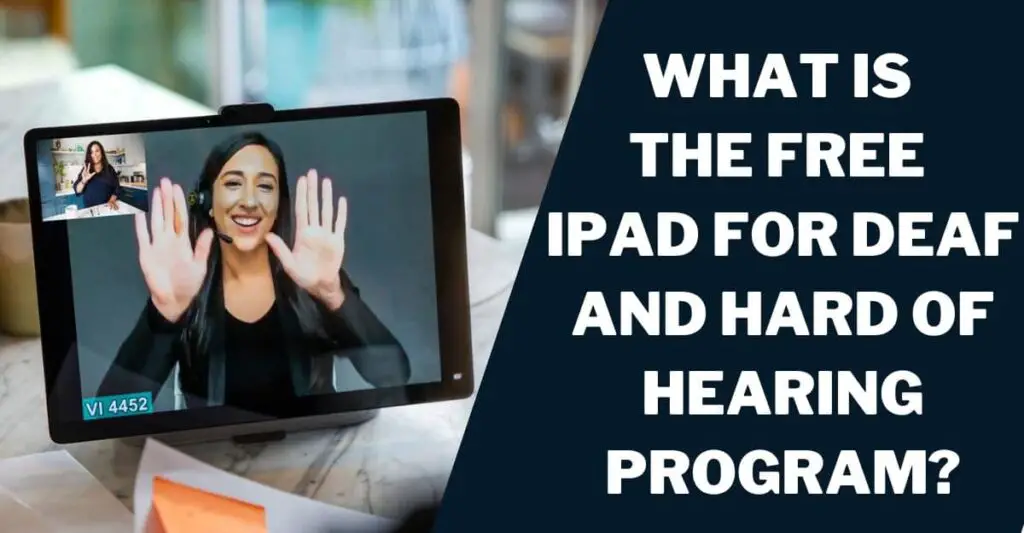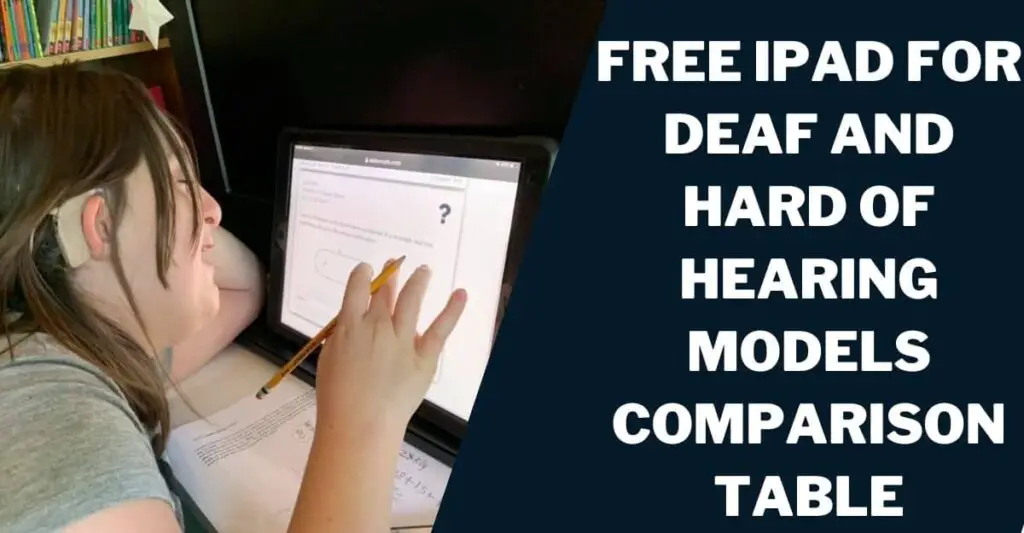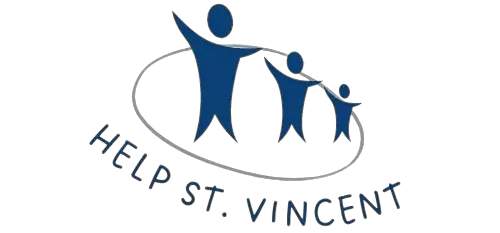Free iPad for Deaf and Hard of Hearing: Providers, How

My buddy texted me the other day about a program that gives away free iPads to folks who are deaf or hard of hearing.
I decided to give it a whirl, followed all the steps, and now I’ve got my niece her very own iPad, and it didn’t cost me a dime.
In this article, I’ll explain how you can get Free iPad for Deaf and Hard of Hearing.
What is the Free iPad for Deaf and Hard of Hearing Program?

The Free iPad for Deaf and Hard of Hearing Program provides iPads to deaf and hard of hearing individuals who need them to access communication, educational, and other essential resources.
While you’re exploring resources, did you know there are also initiatives offering Free Phones for Hard of Hearing Seniors.
Top 5 Free iPads for Deaf and Hard of Hearing Providers
These are the top 5 free iPad for deaf and hard of hearing providers:
1. Hearing Loss Association of America (HLAA)
The HLAA helps people with hearing difficulties by offering iPads through their Hearing Loop Project, funded by the FCC’s Universal Service Fund.
These iPads have useful apps and features. Eligibility requires meeting specific hearing loss criteria and having financial needs.
2. Starkey Hearing Foundation
The Starkey Hearing Foundation also aids deaf and hard of hearing kids through the Hearing Is Life initiative.
They provide iPads with assistive apps and mentoring for those who meet income and hearing loss requirements.
3. Lions Club International
Lions Club International contributes iPads to those with hearing challenges via their Hearing and Speech Conservation Foundation.
Financial and hearing loss criteria determine eligibility for these iPads, which come with various assistive apps.
4. UnitedHealthcare
UnitedHealthcare supports deaf and hard of hearing children and youth through the HearingHealth4Kids plan.
If they’re part of UnitedHealthcare insurance and meet certain hearing loss criteria, they receive iPads with assistive apps.
5. Telecommunications Relay Service (TRS)
The Telecommunications Relay Service (TRS) government program offers those with hearing difficulties free relay services.
Some TRS providers may provide free iPads to eligible individuals who meet income and hearing loss criteria.
Did you know you might be eligible for a free iPad with an EBT card? Learn all about it in our comprehensive guide: Free iPad with EBT benefits.
How to Get a Free iPad for Deaf and Hard of Hearing
Follow these steps to get a Free iPad for Deaf and Hard of Hearing:
- Review Eligibility: Ensure you meet the program’s criteria, including specific hearing loss standards, financial need, or residency requirements.
- Gather Documents: Collect necessary documents such as proof of hearing loss, income, and residency. Each program has unique document needs.
- Contact the Program: Reach out to the program you’re eligible for. Inquire about the application process and necessary paperwork.
- Apply: Complete the application process as instructed by the program. This might involve submitting forms, documentation, and any requested information.
- Await Response: The program will review your application and determine your eligibility. If approved, they’ll contact you.
- Receive iPad: Once approved, the program will provide an iPad with assistive apps and features.
Did you know Tmobile also provides one? Check out this post on T Mobile Free iPad to learn more.
Eligibility Criteria
These are the eligibility criteria to get a free iPad for deaf and hard of hearing:
- Hearing Loss: To be eligible, individuals should have a hearing loss meeting specific standards. These standards vary per program, often requiring a hearing level of 70 decibels or higher in the better ear.
- Income Evaluation: Applicants should have a total income that matches or is below 135% of the federal poverty level.
- Residency Requirement: Applicants must reside in the US.
- Age Consideration: Individuals must be aged 18 or older.
Required Documents
These are the required documents to get a free iPad deaf and hard of hearing:
- Proof of Hearing Loss: This can be a copy of your audiogram or other medical records that confirm your hearing condition.
- Proof of Income: Share a copy of your tax return or any financial documents that show your income level.
- Proof of Residency: Provide a copy of your driver’s license or government-issued identification confirming your address.
- Letter of Support from a Healthcare Professional: Obtain a letter from your doctor or healthcare provider. This letter should state that you meet the program’s criteria for hearing loss and that you would benefit from receiving an iPad.
Curious about how Medicaid can lead to a free iPad? Discover more in our detailed guide on getting a Free iPad with Medicaid!
Top 5 Free iPad Models Offered for Deaf and Hearing Impaired People
These are the Top 5 Free iPad Models Offered for Deaf and Hearing Impaired People:
1. iPad Air 5th Gen
The latest iPad boasts an A15 Bionic chip, a Liquid Retina display, and a 12MP Ultra Wide front camera with Center Stage. Designed for video calls, sign language apps, and assistive tech, catering to the needs of the deaf and hearing impaired.
2. iPad mini 6th Gen
Compact and portable, this iPad holds an A15 Bionic chip and a 12MP Ultra Wide front camera with Center Stage. Its smaller size offers convenience for users who prefer a more manageable device.
3. iPad 9th Gen
It is a cost-effective option with an A13 Bionic chip, a Retina display, and a 12MP front camera. Suitable for deaf and hearing impaired individuals, it encompasses valuable features for their needs.
4. iPad Pro 11 inch
The premium choice boasts an M1 chip, Liquid Retina XDR display, and a 12MP Ultra Wide front camera with Center Stage. This iPad delivers high performance capabilities for various tasks, accommodating diverse requirements.
5. iPad Pro 12.9 inch
The largest model with an M1 chip, Liquid Retina XDR display, and a LiDAR Scanner for enhanced augmented reality experiences.
Its expansive screen real estate caters to those seeking increased visibility and advanced functionalities.
Dreaming of owning an iPad Pro without breaking the bank? Dive into our guide on How to Get a Free iPad Pro to uncover some fantastic tips and tricks!
Free iPad for Deaf and Hard of Hearing Models Comparison Table

This table compares the Models of Free iPad for Deaf and Hard of Hearing:
| iPad Model | Size | Display | Processor | Functionalities for Deaf People | Other Features |
|---|---|---|---|---|---|
| iPad Air 5th Gen | 10.9 inches | Liquid Retina display | A15 Bionic chip | Supports Live Captions, Zoom, and other assistive technology apps. | 5G connectivity, 12MP Ultra Wide front camera with Center Stage, Touch ID, USB C port |
| iPad mini 6th Gen | 8.3 inches | Liquid Retina display | A15 Bionic chip | Supports Live Captions, Zoom, and other assistive technology apps. | 5G connectivity, 12MP Ultra Wide front camera with Center Stage, Touch ID, USB C port |
| iPad 9th Gen | 10.2 inches | Retina display | A13 Bionic chip | Supports Live Captions, Zoom, and other assistive technology apps. | 8MP front camera, Touch ID, Lightning port |
| iPad Pro 11 inch | 11 inches | Liquid Retina XDR display | M1 chip | Supports Live Captions, Zoom, and other assistive technology apps. | 5G connectivity, 12MP Ultra Wide front camera with Center Stage, LiDAR Scanner, Thunderbolt port |
| iPad Pro 12.9 inch | 12.9 inches | Liquid Retina XDR display | M1 chip | Supports Live Captions, Zoom, and other assistive technology apps. | 5G connectivity, 12MP Ultra Wide front camera with Center Stage, LiDAR Scanner, Thunderbolt port |
Exploring ways to support autistic children in the UK? Our article on Free iPad for Autistic Child UK has you covered with valuable insights and resources.
Top 5 Apps for Deaf or Hard of Hearing People
These are the Top 5 Apps for Deaf or Hard of Hearing People:
1. Ava
A real time transcription app that captures group conversations for people with hearing difficulties. Participants install the app on their smartphones, and it transcribes spoken words. This is especially useful in group settings where lip reading might be challenging. Available on iOS and Android.
2. RogerVoice
A French app that offers live transcription of phone conversations in over 100 languages. It also enables voice synthesis responses. Individuals with hearing loss or speech difficulties can communicate via phone and receive typed text of the conversation.
Qualified interpreters assist in calls; a free version offers an hour of video interpreter support. Great for remote inquiries. Available on iOS and Android.
3. Sound Amplifier
Android’s equivalent to iPhone’s Live Listen feature, the Sound Amplifier app adjusts sound volume and minimizes background noise. It enhances audio quality with headphones for a comfortable and natural listening experience. Useful in noisy environments. Available on Android and native to Google Pixel phones.
4. TapSOS
The British app Tap SOS connects deaf and hard of hearing individuals with emergency services silently. Personal medical history can be stored in profiles for optimal care during emergencies.
The app shares location and profile data when connecting with emergency responders. Recognized for effectiveness, it won the 2018 Digital Health Award. Available on iOS and Android.
5. Subtitle Viewer
Subtitle Viewer provides real time subtitles from smartphones’ microphones, allowing deaf and hard of hearing users to read subtitles in different languages. Syncs with TV and cinema, making it a solution for captioning if movie screenings lack subtitles. Similar apps cater to hearing impaired patrons in cinemas.
How to Choose the Best Free iPad for Deaf and Hard of Hearing Program
Follow these steps to Choose the Best Free iPad for Deaf and Hard of Hearing Program:
- Evaluate Eligibility: Determine if you meet the specific criteria outlined by each program, considering factors like income, age, and hearing loss level.
- Research Program Offerings: Explore the features and benefits each program provides along with the free iPad. Look for assistive apps and technologies catering to your needs.
- Consider Device Options: Compare the available iPad models and their features, assessing which one aligns best with your preferences and requirements.
- Check Application Process: Understand the steps required for application submission, ensuring you provide accurate information and necessary documentation.
- Review Terms and Conditions: Thoroughly read the program’s terms, conditions, and any obligations associated with receiving the free iPad.
- Confirm Accessibility Support: Ensure the chosen program offers ongoing support and resources for device setup, usage, and addressing any challenges.
- Seek Recommendations: Consult with trusted sources, such as organizations supporting the deaf and hearing impaired, to gather insights on reputable programs.
How Can I Use My iPad for Hearing Impaired?
Follow these steps to Use your iPad for Hearing Impaired:
- Live Captions: Live Captions automatically change spoken words into text, helping you understand conversations and videos better. This feature is available on iPads.
- Zoom: Zoom is a video chat app that lets you communicate face to face. It includes options like captions and written records, which aid people with hearing difficulties.
- Sign Language Apps: Sign language apps are accessible to learn or convert spoken language to sign language.
- Hearing Aid Compatibility: Certain iPads work well with hearing aids, allowing audio to be directly transmitted.
Benefits of the Free iPad for Deaf and Hard of Hearing Program
These are the benefits of the free iPad for deaf and hard of hearing program:
- Enhanced Communication: The Free iPad for Deaf and Hard of Hearing Program significantly improves communication for individuals with hearing difficulties. Participants can better engage in conversations and interactions through assistive apps and features.
- Accessibility to Information: With the aid of iPads, program beneficiaries gain greater access to information. They can readily explore resources, stay informed, and participate in various aspects of life that rely on digital communication.
- Empowerment in Group Settings: Deaf and hard of hearing individuals often face challenges in group conversations. This program empowers them to actively participate and understand discussions, fostering a sense of inclusion and self confidence.
- Educational Support: The iPads provided through the program equip recipients with educational tools and resources. This proves especially beneficial for students, enabling them to engage effectively in learning activities and access educational content.
- Independence and Quality of Life: By offering iPads, the program enhances the independence and overall quality of life for individuals with hearing difficulties. It enables them to independently manage tasks, access services, and enjoy a more fulfilling lifestyle.
Curious about the QLink free tablet offer? Delve into the details in our article: QLink Free Tablet.
FAQs on Free iPad for Deaf and Hard of Hearing
These are the frequently asked questions about Free iPad for Deaf and Hard of Hearing:
Is the Deaf and Hard of Hearing Program available nationwide?
The iPad for deaf and hard of hearing program is available nationwide. However, the availability of each program depends on the organization that offers it.
Can individuals with varying degrees of hearing loss apply?
Individuals with varying degrees of hearing loss can apply. Some programs have specific hearing loss requirements, but most programs are open to individuals with all degrees of hearing loss.
What kind of technical support will be provided to users who may not be familiar with iPads?
The technical support provided to users includes training on how to use the iPad and help with troubleshooting problems.
Can users request specific accessibility features to be enabled on their iPads?
Most programs allow users to request specific accessibility features to be enabled on their iPads.
Is there ongoing support for maintenance and troubleshooting after receiving the iPad?
There is ongoing support for maintenance and troubleshooting after receiving the iPad. However, this depends on the program.
Conclusion
Inclusion meets innovation through the Free iPad for Deaf and Hard of Hearing initiative. With assistive technology at their fingertips, communication barriers dissolve, independence soars, and learning thrives. These iPads empower individuals to seize opportunities, proving that a simple device can unlock a world of possibilities.


